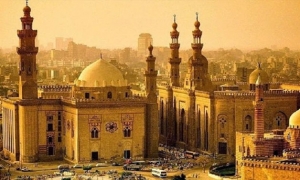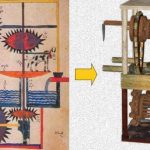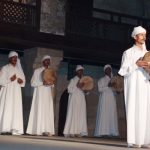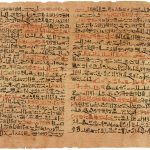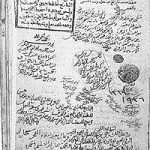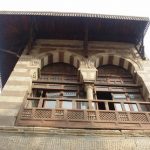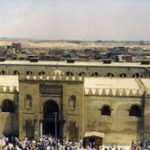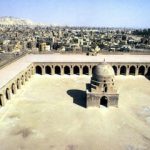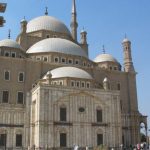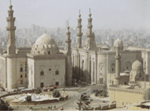Carpet Collection
The Museum of Islamic Art also displays a large collection of Arabian carpets that were brought from many mosques and historical houses from all around Egypt.
The collection of carpets of the Museum grew massively when the museum took the selection of carpets that used to belong to Ali Pasha Ibrahim in 1949, which was considered to be one of the largest and most valuable collections of carpets in the whole world at the time.
Among the most distinctive displays of the museum is a tomb cover that dates back to the year 652 A.D., 12 years after Muslims took control of Egypt.

The Museum of Islamic Art also hosts many other rare displays like the pitcher that was found in a village near the governorate of Fayoum. This pitcher was part of the items that were found in the tomb of Marwan Ibn Mohamed, the last Caliph of Beni Omaya. It was made out of Bronze and it is 41 centimeters high and its diameter is 28 centimeters. This pitcher is one of the most elegant displays in the Museum of Islamic Art.
Wooden Collection In The Museum
The Museum of Islamic Art displays some marvelous wooden objects that reflect how skillful early Muslims were in the manufacturing and carving of wood. The art of wood carving flourished greatly during the Fatimid era when the wood was decorated and carved in two different styles. Some wooden decorations were found in the complex of Sultan Qalaun in El Mui’z Street that was originally brought from the Western Fatimid Palace in the area of Bein El Qasrein in Islamic Cairo. They were put on display in the museum and illustrate how clever and creative the Fatimid workers and craftsmen must have been.
Many of the wooden objects that were manufactured during the Mamluk and Ottoman periods were decorated with mother of pearl and ivory. Examples of these objects are the Qur’an holder and the chair that was brought from the Madrasa of Um El Sultan Sha’ban.
Displays From The Fatimid Period
The Museum of Islamic Art has some of the most beautiful antiquities that date back to the Fatimid period. This collection includes some remarkable jewelry especially a plain golden ring, another ring with plants ornaments, and a wonderful statue of an antelope made out of bronze.
Displays From The Mamluk Period
The Mamluks ruled over Egypt for a considerable period of time and influenced Egyptian history in many ways. This is perfectly reflected in the large collection of displays in the Museum of Islamic Art that dates back to the Mamluk period. The Mamluk collection of the museum includes many lamps that were used to light the historical mosques of Cairo. The most interesting among these lamps is an eight-sided Chandelier that consists of three layers with a dome-shaped top and wonderful Islamic decorations on its glass. This lamp was brought from the magnificent Sultan Hassan Mosque that was constructed in 1362.
There are many marvelous displays in the Museum of Islamic Art that date back to the period of the Mamluks. Among these is the pencil box rich with gold and silver decorations with the name of Sultan Al Mansur Mohamed, the Mamluk Sultan who died in 1363. There is also a wonderful candleholder that was manufactured in 1473 in the reign of Sultan Qaitbey. The candleholder has wonderful Islamic writings in the shape of some flames. This is besides many metal items that were gathered from Iraq, Iran, Yemen, and many other Islamic countries.
The Section Of Islamic Ceramics
The Museum of Islamic Art displays some of rare collections of Islamic ceramics whose manufacture has flourished in the Islamic world since the early days of Islam. The most remarkable among these items is the collection of the shining Abbasid ceramics. A sahn or an open courtyard has been founded in the museum to exhibit the different types of ceramics. This Sahn dates back to thousands of years. There are also some Andalusian open courtyards with many marvelous ceramics, Iranian ceramics, Chinese porcelain and other antiquities.

The museum offers the guests a wonderful illustration of the development of ceramic production in Egypt and the Islamic world as a whole. The Mamluks played a great role in this development when they tried to copy the notable Chinese ceramics especially these with the blue decorations and the white background. The museum also has some ceramics that were produced in some Turkish cities like Iznik during the Ottoman period. Among the most distinctive rare ceramics in the museum are some tiles that were made by Chinese Muslims such as a box made out of porcelain that says “Thank God” on it.

